Keynote Speakers
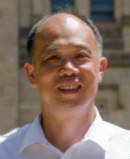
|
Prof. Wenzhe Tang |
| Tsinghua University | |
| http://www.civil.tsinghua.edu.cn/he/essay/346/643.html | |
|
Title: Hydropower Development from a River Basin Perspective Abstract: To meet the increasing demand for renewable energy, and reduce climate change and acidification arising from using fossil fuels, hydropower fits for the implementation of long-term sustainable energy policy. A key unanswered question is how to align the multiple or conflicting objectives of hydropower development from a river basin perspective. We presented solutions to sustainable hydropower development on three governance levels. At the national level, there is a need to measure and understand the cascade effects of dams at river basin scale for optimizing the reservoir operation and environmental protection. Governance improvements are required to revise the environment law, update migrants’ compensation standards, reform the price of hydro-electricity, and establish an interregional transfer payment system for balancing social and environmental losses of affected areas. At the project level, it is critical to support migrants’ sustainable development, preserve indigenous culture, optimize joint operation of cascade reservoirs, mitigate geological and weather-related hazards, and enhance riverine ecosystems’ resilience. At international level, neighboring countries should establish partnering relationships to cooperatively manage the transboundary rivers associated with hydropower production, water sharing, environmental sustainability and climate change. China has rich managerial and technological experience arising from a variety of hydropower projects. The holistic hydropower development approaches in China can serve as a model for improving governance of rivers worldwide, especially in developing countries. |
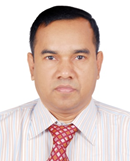
|
Prof. Alam Md. Mahbub |
| Harbin Institute of Technology | |
| http://homepage.hit.edu.cn/pages/alam | |
|
Title: Energy extraction from galloping vibration Abstract: Extraction of the renewable energy rapidly increases because of the recent research focus on ocean and wind energy. The ocean occupies 70% of the earth’s surface, and water is 1000 times heavier than air. This abundance and high density makes it superior for power generation capability over air. The ocean energy is present in two forms, i.e., waves in the vertical direction and currents in horizontal direction. While the former is seasonal or dependent on weather, the latter is persistent. Energy can be harnessed continuously from horizontal currents by employing alternating lift force technologies. Fluid flow over structures (i.e., foils, circular, square, rectangular cylinders) produce alternating lift force due to complex fluid-structure interactions. The lift force generates vibration of the structure. Flow-induced vibration (FIV) involves different phenomena such as vortex-induced and galloping vibrations. Kinetic energy of a violently vibrating structure or structures can be converted into electricity, running a generator. This lecture will encompass energy extraction from galloping vibrations of two circular cylinders of different diameters, casting light upon the mechanisms behind the galloping vibration and its sustainability. |
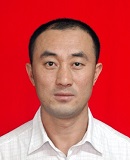
|
Prof. Dongsheng Yang |
| Northeastern University | |
| http://www.ise.neu.edu.cn/2019/0109/c1423a8326/page.htm | |
|
Title: Intelligent perception and security monitoring of complex industrial processes Abstract: Intelligent perception and security monitoring of complex industrial processes are key issues that must be addressed to improve the safety and stability of industrial systems. The theme of this report is based on the background of electric power and the theory of deep learning, research on the three core issues of intelligent state perception, intelligent fault diagnosis and intelligent self-healing control in the power transmission and distribution process. The research to be carried out could provide basic theory of generality to system construction, information perception, fault diagnosis, and self-healing control of advanced industrial production and transportation process under the guidance of national energy strategy. The report contains: 1) Proposal of the transmission chain intelligent sensing method based on HPLC to realize the panoramic dynamic information perception at the end of the distribution grid; 2) Establish the fault diagnosis theory enhanced by the combination of data driving and mechanism model to solve the basic problem of industrial process safety operation; 3) Propose the synchronous control method of negative power generation, enhance the frequency modulation capability by the linkage control of RES generation and thermal unit load, to avoid the occurrence of broadband oscillation, and to provide the necessary basic theory and key technology guarantees for the efficient and stable operation of the energy transmission. |
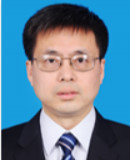
|
Prof. Jizhong Zhu |
| South China University of Technology | |
|
Title: Key Technologies for Integrated Smart Energy System (ISES) Operation Abstract: In view of the fact that traditional energy systems cannot cope with the three new challenges of “multi-energy flow, multi-scale, multi-agent”, theoretical breakthroughs are urgently needed. It is important to build an Integrated Smart Energy System that can help break barriers between traditional energy systems, address new challenges, and increase the overall efficiency of energy. Therefore, the research and construction of integrated smart energy system is an inevitable choice under the background of increasingly prominent energy and environmental issues. The report consists of four parts: 1) Introduction of integrated smart energy systems (ISES) 2) Key technology analysis of coordinated optimization operation of ISES 3) Key technologies analysis for demand-side energy efficiency management of ISES 4) Conclusion |
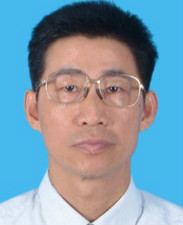
|
Prof. Dr. Cun-Yue Guo |
| University of Chinese Academy of Sciences | |
| http://people.ucas.ac.cn/~cyguo?language=en | |
|
Title: Advances in organics/CNT thermoelectric composites Abstract: Thermoelectric (TE) materials can realize direct conversion between heat and electricity. High TE performance is achieved via the formation of composites from organic and inorganic components. Herein, we prepared three types of flexible TE composites: PPy/SWCNT composites, PhC2Cu/SWCNT composites, and PEDOT/SWCNT composites by utilizing the high electrical conductivity of SWCNT and varying organic materials. The PPy/SWCNT nanocomposites possessed large-area, super flexibility, stretchability and mechanical stability, affording greatly enhanced TE performance with the maximum power factor of 21.7 ± 0.8 μW m−1 K−2. As for the PhC2Cu/SWCNT nanocomposites, an unusual mechanochromic luminescence phenomenon from bright green to dark red is clearly observed after grinding the PhC2Cu crystalline nanobelts. Moreover, it displayed high mechanical flexibility and excellent TE performance. The maximum power factor at room temperature reached as high as 200.2 ± 10.9 μW m−1 K−2. The PEDOT/SWCNT) nanocomposites prepared by dynamic 3-phase interfacial polymerization and subsequent physical mixing afforded maximum power factor of 253.7 ± 10.4 W m−1 K−2; chemical doping of SWCNT further enhanced the power factors of such composites to much higher values, 350.0 ± 47.6 W m−1 K−2 at room temperature and 510.2 W m−1 K−2 at 412 K. |
Important Dates
- Paper submission due
November 10, 2019 - Conference date
November 19-21, 2019
Paper Submission
Attending the Conference
- Conference schedule
- Conference venue
- Conference notification
- Participant guidelines
- Application form
- Traveling tips
Best Paper / Reviewer
Contact us
- Email: secretary@iceeep.org
- Tel: +86-15927125823
- QQ: 3071319055
Friendship Links
